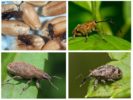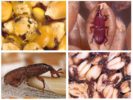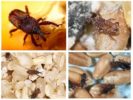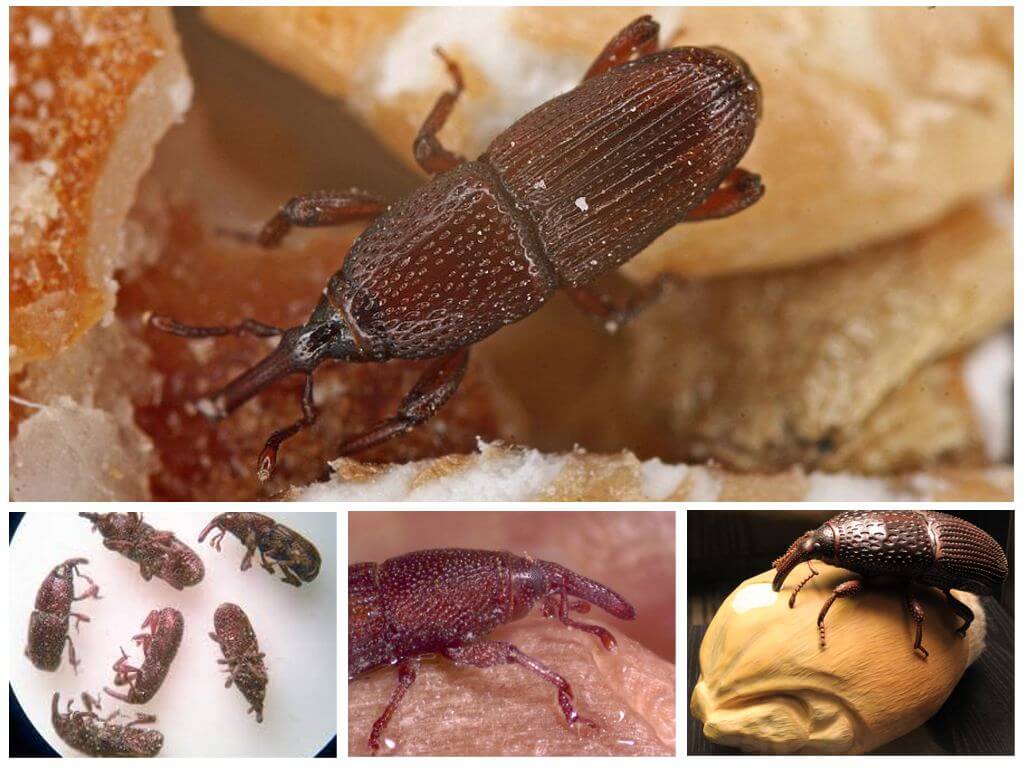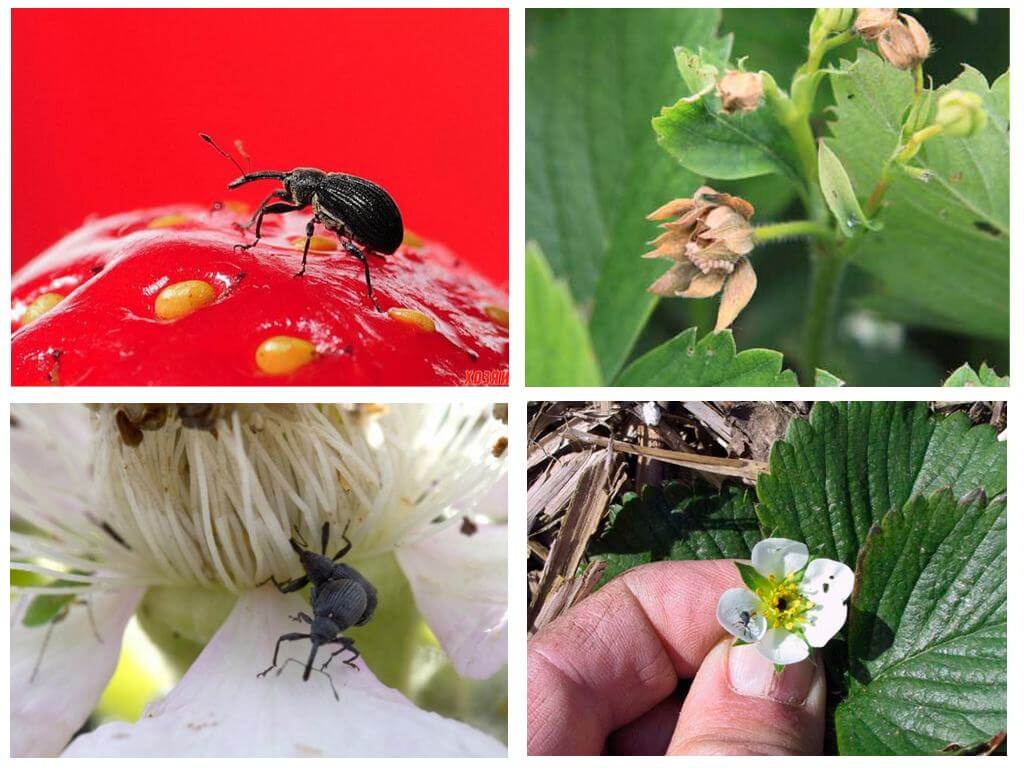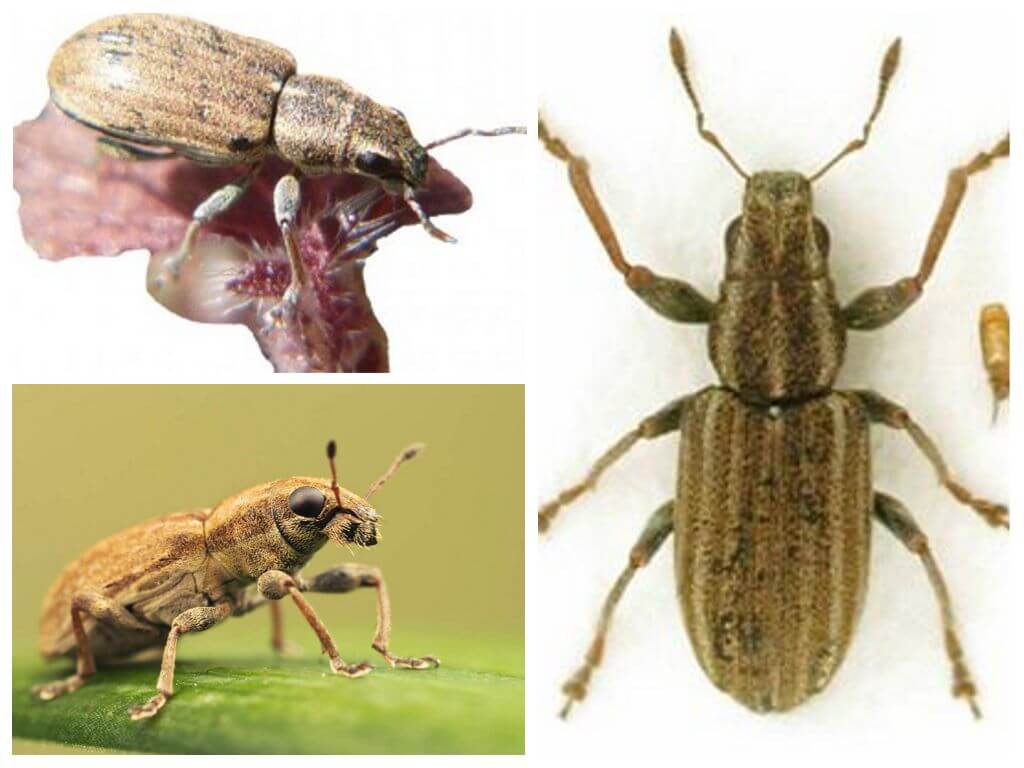- Weevil species
- Barn weevil in the house
- Weevils in the house
Weevils, they are elephants, belong to the largest family of beetles. Insects love the warm climate and 65 thousand species live in the tropics. Only 5,000 species live in the CIS. They are common in fields, warehouses, from where they fall into grocery stores and then into an apartment. For a long period, domestic pests do not give out their presence and by the time of detection, the population becomes very large. Therefore, you can not ignore the problem of how to get rid of weevils in the apartment.
What do weevils look like and what do they eat
Weevils are beetles of miniature size, the length of an adult individual, depending on the species, varies from 2 to 5 mm. Most often they enter the house barn, rice, acorn elephant. The morphology of these species has much in common, and only a specialist can distinguish them. Barn weevil in the apartment is more common than others.
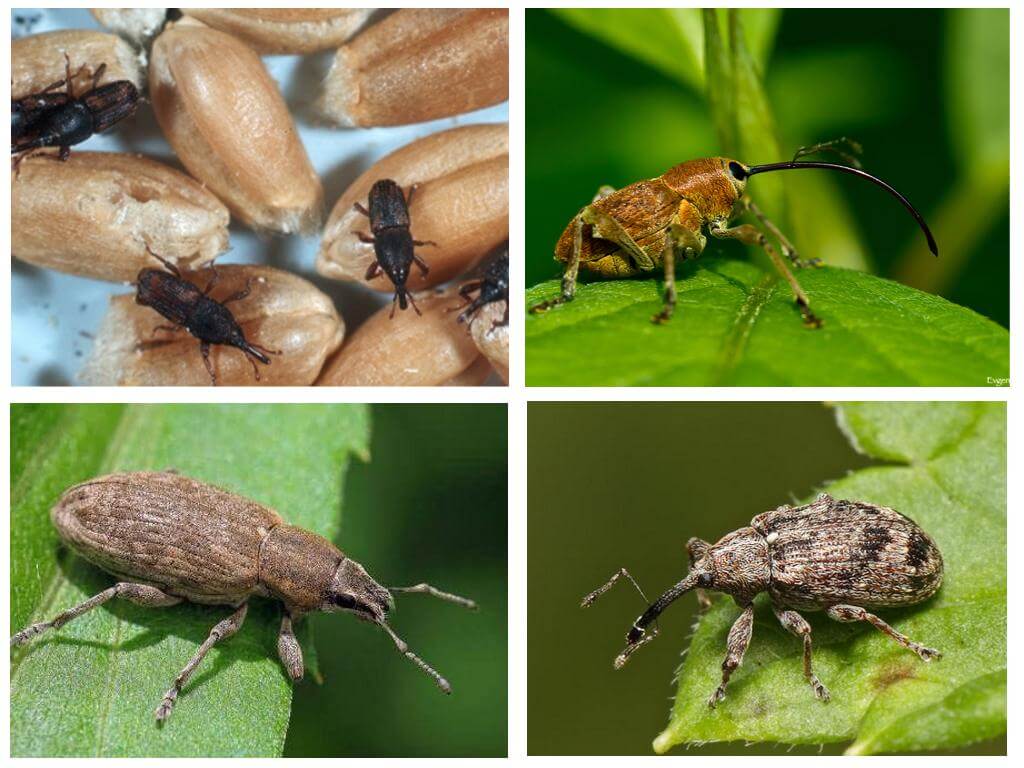
Young individuals are distinguished by a light brown color; as they age, they become almost black. The body of the beetle is cylindrical with a characteristic elongated rostrum, for which it was nicknamed the elephant (see photo). Dimensions depend on the power components and reach 4-4.5 mm. In a barn weevil, wings are poorly developed and it cannot fly. This deficiency is compensated by developed mobile legs, which allow the insect to migrate over long distances. A powerful oral apparatus is located in the rostrum, due to which the insect gnaws at the hard shell of grains, cereals.
Interesting!
Weevils are very shy. They are afraid of light and lighted places. Feeling the danger, insects tightly pressed their paws to the floor and pretend to be dead.
Weevils in the kitchen hit cereals, pasta, flour, corn grains. Some species eat dried fruits, nuts, baked goods, tea, and even herbal medicines. Harm both adults and larvae. In heated rooms at room temperature, beetles live for more than a year. The main determining factors for their development and reproduction are:
- temperature 10-25 ° C;
- humidity in the room 65-70%;
- grain moisture 14-16%.
Feedback
For several months now I have been fighting weevils. For a long time I could not understand why they are planted in flour, and not in other products. And only after reading a number of articles, she determined that the reason lies in high humidity. I store flour in the pantry room, and there it’s damp enough.
Olga, Voronezh
Features of reproduction of weevils in the apartment
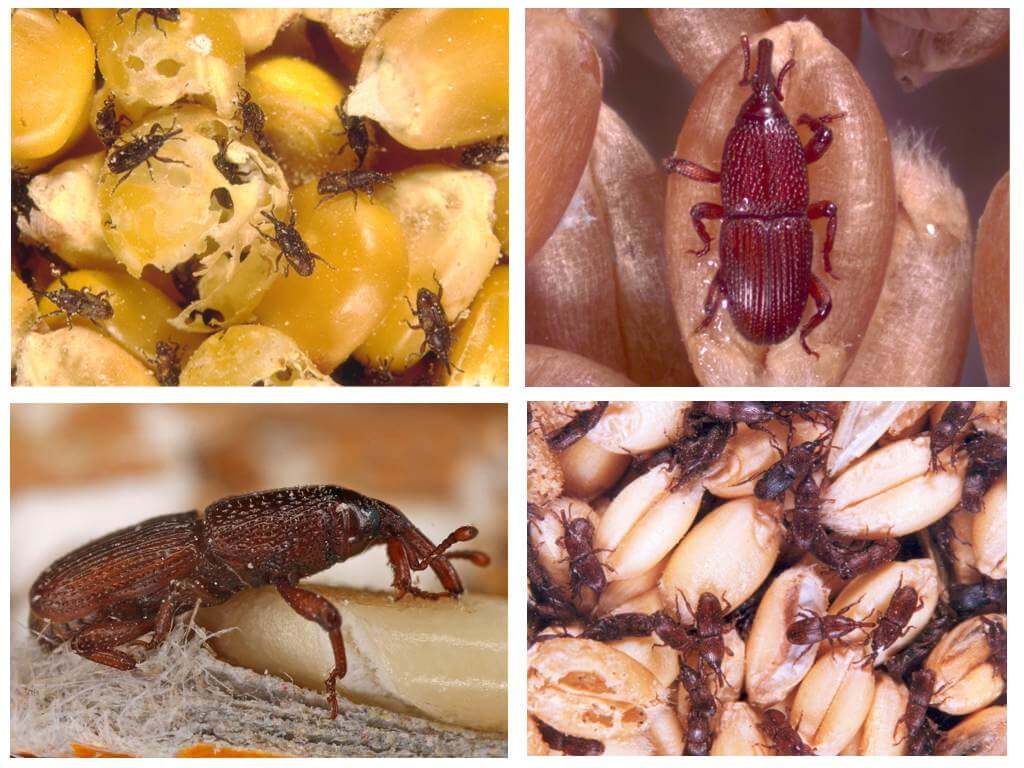
Removing weevil from the kitchen will be much easier if you know how it multiplies. The female lays one egg in the grain, having previously made a hole in it. The fertility of one female leaves 200-250 embryos. Having completed the laying of eggs, the female closes the recess in the grain with mucus, which quickly hardens. Some weevils species randomly scatter embryos on a nutrient substrate. Transparent eggs are dirty white and tiny in size - only 0.6-0.7 mm.
A few days later, a worm-shaped legless white larva hatches from the egg, which remains to live in the grain.Its dimensions do not exceed 3-4 mm, and it can be identified only by a brown speck on the head. The larval stage lasts from 20 to 80 days, then the matured young individual passes into the pupation phase. Pupa has the same shape as an adult beetle. It is distinguished by its transparent cover and white color.
After pupation and hardening of the cover, the young beetle independently gnaws a hole in the grain shell and leaves it.
Causes of weevils and harm
Where grain pests come from is a burning issue. Perfect cleanliness in the kitchen does not save us from the penetration of weevils. The most common way insects get into the house is to purchase contaminated products. Weevil in cereals, legumes, pasta freely overcomes the path from the store to the apartment and develops in the same product.
If the cereal was sent for storage without proper measures, the beetle multiplies safely in grains and the larvae spoil the product. When the food reserve runs out, the beetles gnaw through the bag or bag in which they were located and go to look for a new food.
Important!
Infected products should not be eaten, as they contain the vital products of weevils, which provoke food poisoning and intestinal disorders.
Beetle Control Methods
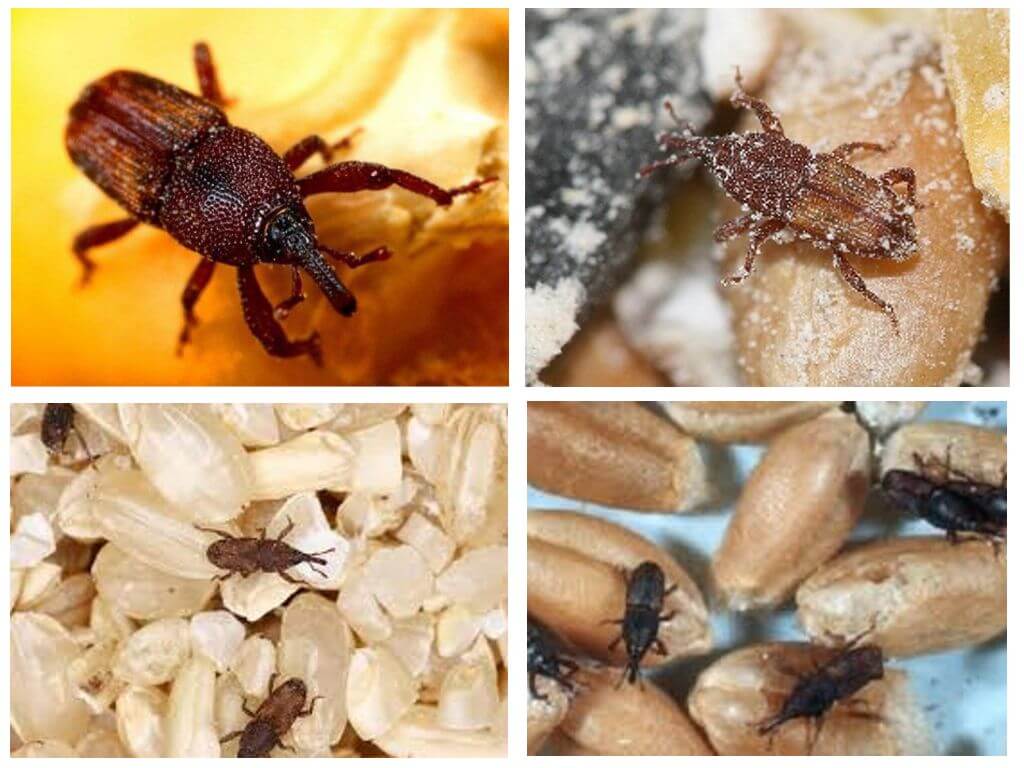
The choice of means for getting rid of weevils is determined by the main criterion - whether it is dangerous to humans or not. Given that beetles start up in food and go deeper into the grain, the use of insecticides is not possible. To poison insects, to lay out poison in the corners is an ineffective and dubious method that will not help to destroy pests.
How to deal with weevil in the kitchen depends on the degree of infection. The destruction of insects will require a number of measures:
- Thorough thorough inspection of food. Some weevils can even start in tea, so no product should be left unattended.
- The food in which the insects were found should be discarded. Wash containers and containers in which bugs were found using disinfectants.
- Treat the kitchen cabinets with a solution of vinegar. Before processing, carry out wet cleaning in cabinets to remove possible waste products of beetles.
- To get rid of weevils at the initial stage of infection, grain, cereals should be placed in the refrigerator or in the oven.
Folk remedies are represented by plants with repelling odors: lavender, bay leaf, garlic. Leaves of grass are laid out in places of storage of grains, cereals, and cloves of garlic are placed directly in a storage container. The most radical folk remedy for weevils that can destroy adults is a mixture of turpentine, liquid soap, ammonia and kerosene. Mix all components in equal proportions and process the potential habitats with the resulting mixture.
The fight against the weevil will be more fruitful if the elementary storage conditions are observed: pre-treatment with cold or heating of grains, followed by placement in a container equipped with a sealed lid.
